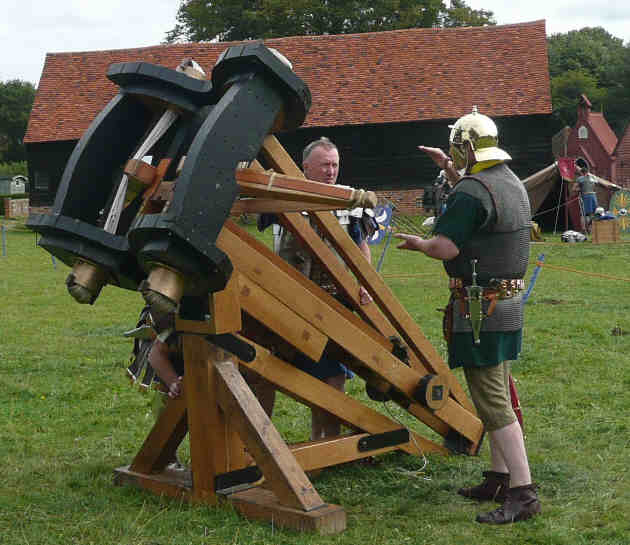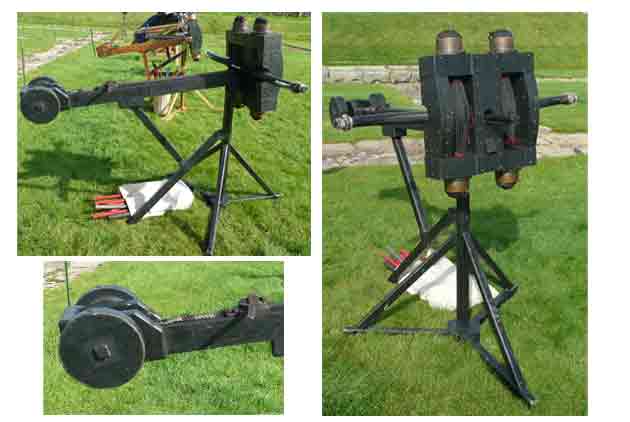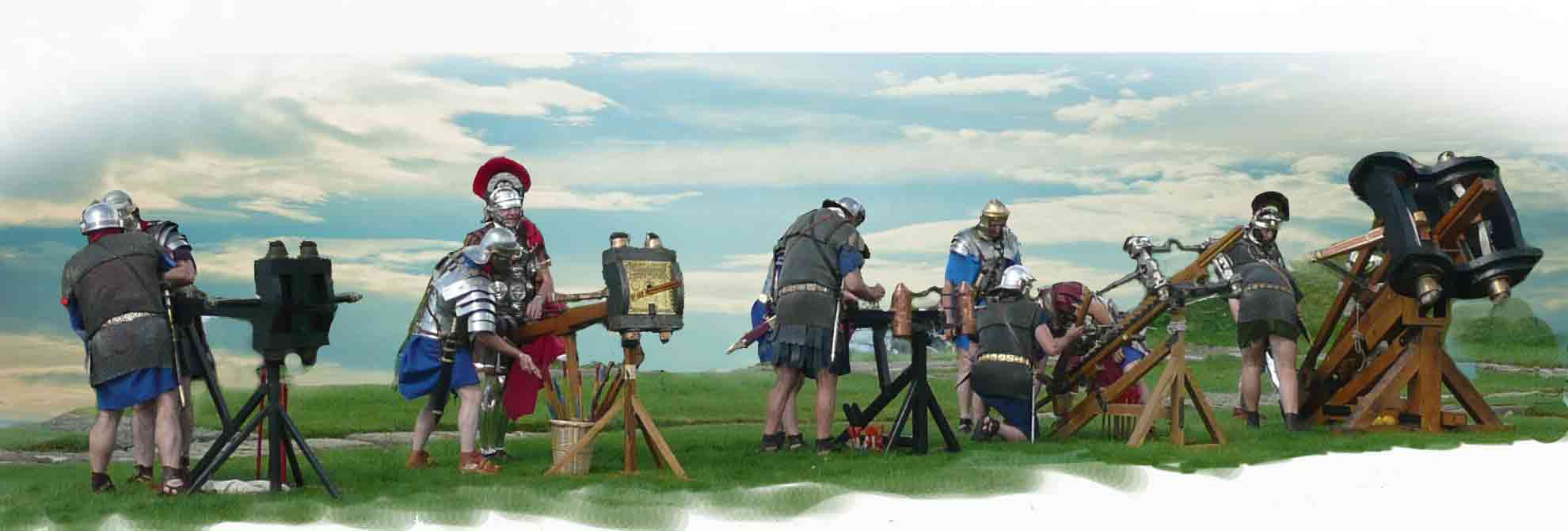Roman Artillery
|
Gaius Vedennius Moderatus, Architectus |
 |
|
|
The formidable firepower of the Roman army was achieved by hand thrown weapons (pila;slingshots), hand drawn longbows and composite bows, mechanical crossbows (arcuballistae), and winched bolt-shooting and stone-throwing catapults. The Romans adopted the torsion artillery
invented by Greek engineers - catapults powered by highly tensioned
and twisted rope springs.Greek and Roman artillery is the best understood
of all branches of ancient applied technology because of the remarkable
survival of a collection of technical manuals written by engineers.
The Society's artillery officer, Moderatus, is engaged in long-term
research on these texts and on the growing number of archaeological
finds of catapult parts. This enables the Society's professional
engineer, Fatalis, to build full size reconstructions, which are
put through a programme of tests designed to assess the weapons'
capabilities. |
|
|
|
Vitruvius'
Ballista This ballista is a palintone or stone throwing machine. "Bestia" represents the smallest stone thrower in the Roman army. It is a 2 libra ( 2 pounder ). The stones would not be capable of knocking down walls, but would be ideal if used against groups of warriors or being dropped into hill forts or towns. |
|
|
The Three-span or Larger
Scorpion bolt-shooter, is constructed from the description
by Vitruvius, Augustus' catapult engineer, and from finds such as
the iron frame discovered at Caminreal, Spain. The scorpion's accuracy
is praised by Caesar, and it was the standard legionary catapult
at the time of the Roman invasion of Britain.
|
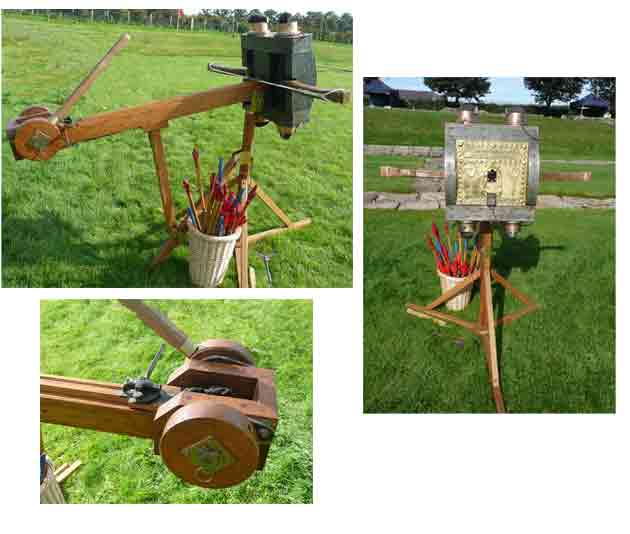
|
"TI.CLAVDIODRVSI.F.CAESARE "For Tiberius Claudius Caesar Augustus Germanicus the son of Drusus" (The Emperor Tiberius)
|
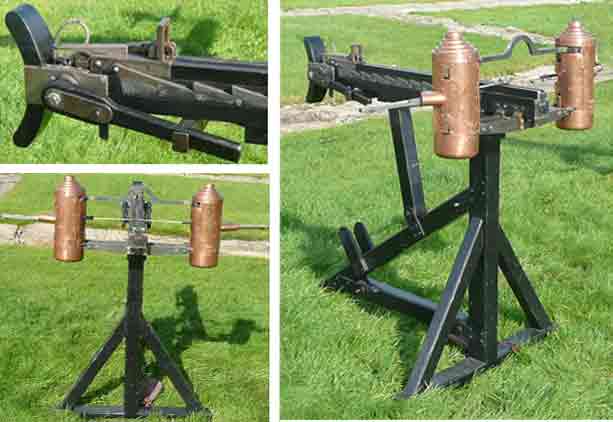
|
By AD 101 the Roman army had redesigned the bolt-shooter, replacing its rather clumsy iron-plated wooden frame with a brilliantly engineered metal framework that increased the power and allowed an unobstructed view of the target. A few parts from machines of this type have been found, and an illustrated text survives describing the smallest version of this new design, the Manuballista or LesserScorpion Modern reconstructions of the Manuballista as a stomach-bow ignore the categorical statement by Heron that torsion catapults were so powerful that they required winches. |
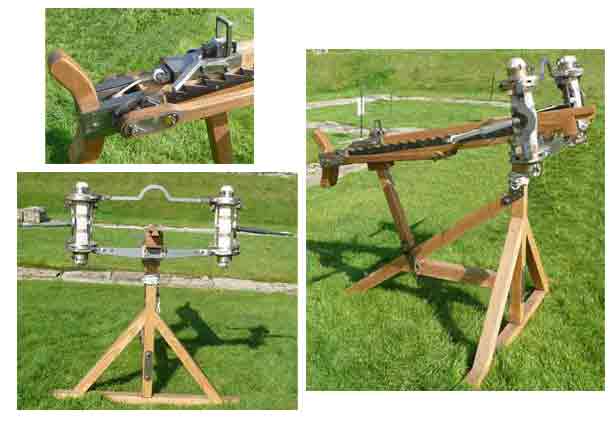
|
|
 |
The Xanten
catapulta The smallest known bolt shooter in the Roman Army. Known to the unit as "Vespa" because of its sting. Full article (1.3MB) |
|
|
Stone-throwing catapults The Society fields Dr Eric Marsden’s small version of the One-arm or Onager, described by Philon and Ammianus as a large heavy stone thrower used in sieges for defence or attack |
|
|
A semi-automatic catapult A detailed verbal description is given by Philon of the Polybolos ("multi-shooter"), a repeating bolt-shooting catapult designed by Dionysius of Alexandria in the 3rd century BC. This remarkable catapult is worked by a windlass driving a double chain drive, by catches that automatically lock and release the trigger, and by a cam mechanism that feeds bolts from a magazine. The first full reconstruction has been built by Moderatus for the BBC2 series "What the Romans did for us." It offers a rate of fire at least three times that of a standard scorpion, and it could be locked onto a target. The Roman army would have known of this machine and may well have used it. |
 |
Roman Artillery Balls from Qasr Ibrim, Egypt(6.8MB) |
|
|
